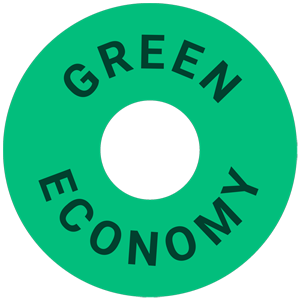Setting and working towards targets to reduce greenhouse gas emissions is nothing new. But science-based targets (SBTs), a term coined in 2015, take things a step further by aligning an organisation’s goals with what climate scientists say is necessary to avoid ‘dangerous’ levels of global warming.
1. What do we mean by ‘science-based’?
In practice, basing targets on climate science means aligning them with the goals of the Paris Agreement, a historic deal brokered between 197 countries in 2015. Think of it as the world’s official climate change plan. The terms of the agreement are to:
- Work together to limit global warming to “well below” 2°C, preferably 1.5°C, compared to pre-industrial levels
- Reach a peak in global greenhouse gas emissions as soon as possible to achieve net zero by mid-century
SBTs ensure that an organisation is delivering its ‘fair contribution’ to achieving these goals and has a robust plan to do so. They also reduce the risk of greenwashing by making sure targets are clear, transparent and proportionate.
SBTs are not just for organisations. The UK’s national target of net zero by 2050 (with a key milestone of 78 per cent by 2035 compared to 1990 levels) is based on the ‘science-based’ recommendations of the UK’s Climate Change Committee.
2. Corporate targets
In the corporate world, science-based targets often follow criteria set by the Science-Based Targets initiative (SBTi). The SBTi guides companies in setting SBTs, promotes best practice and provides independent assessment and validation of targets.
Just under 6,000 major companies worldwide have set SBTs through the SBTi to date (you can find a searchable list of them all here), and numbers are growing rapidly. In fact, research shows that all large UK businesses need to set and follow SBTs within the next few years if the country is to stand a good chance of achieving net zero by 2050.
3. Why do I need to set science-based targets?
It may seem like SBTs are something for large organisations, cities and countries to worry about, not small businesses. But while setting a formally verified target through the SBTi is perhaps a step too far for many SMEs for the time being (although there is a streamlined route designed specifically for organisations with less than 500 employees), it is still advisable for small businesses to follow science-based principles in their own carbon reduction plans.
This way, you can demonstrate to customers and stakeholders that you are taking a strong position on the climate emergency while keeping up with those leading the way. This is important because SBTs require large companies to cut the emissions associated with the goods and services they procure (also known as ‘Scope 3’ emissions), which means they will be looking for suppliers that can help them.
Corporate SBTs are already filtering down supply chains as a result. For example, Unilever has announced that it will actively prioritise partnerships with suppliers that have set science-based targets going forward. Similarly, tech platform Salesforce is working with 250 of its top suppliers to set their own SBTs by 2024. This is something we can expect to see much more of in future.
4. How to follow a science-based pathway
So how can SMEs set a science-based pathway of their own? It starts with your organisation’s carbon footprint.
Once you have your first carbon footprint, covering as much of the more difficult Scope 3 emissions as possible, use it as a baseline to plan your reductions.
You need to set targets that fit within the boundaries of climate science. These include ‘near-term’ targets of 5-10 years as well as a ‘long-term’ target of reaching net zero no later than 2050.
- Reduce your Scope 1 and 2 carbon footprints in absolute terms by 4.2 per cent annually (depending on your start date)
- Reduce your Scope 3 carbon footprint in absolute terms by at least 2.5 per cent annually (this is optional for SMEs going through the formal SBTi process, but measuring Scope 3 is considered a minimum)
- Achieve an absolute reduction in your total carbon footprint of at least 90 per cent overall by 2050 or sooner
More guidance is also available via the Carbon Trust, and if you want your targets to be formally verified, you can find information about the SBTi’s streamlined verification route for SMEs here.
The SBTi criteria are not dissimilar to the SME Climate Commitment that is backed by the UK government. This commitment asks you to:
- Halve your absolute carbon footprint (Scope 1, 2 and business travel as a minimum) by 2030
- Achieve net zero before 2050, with at least a 90 per cent absolute reduction in your total carbon footprint
- Disclose your programme on an annual basis
5. Carbon offsetting is not included in science-based targets
Science-based targets are about taking direct responsibility for the emissions we produce. With that in mind, under the SBTi protocols, carbon offsets cannot be counted towards them; organisations can only count the direct reductions they make themselves.
This makes the targets more difficult to achieve but with good reason. To get the most benefit out of your carbon reduction journey, offsets should always be the last resort. You can read more about that in our guide to offsetting.
Further reading
Science Based Targets Institute guide to SBTs and setting targets Set a Target - Science Based Targets
Carbon Trust’s Science-based targets guide Science-based targets guide | The Carbon Trust
Need support?
It’s important to think through your targets carefully (although the SME Climate Commitment is a good basis to work from), and you also need a robust plan in place to achieve them. If you’re new to all of this and need support, we are on hand to offer support.
Get in touch
Last updated August 2023





